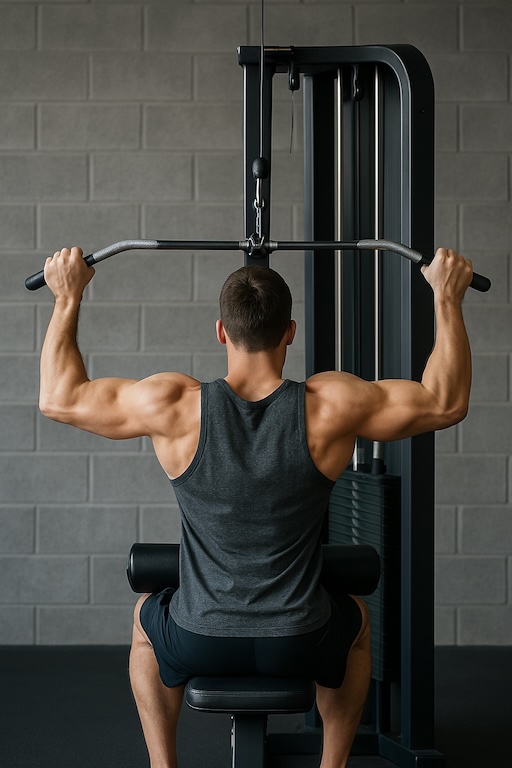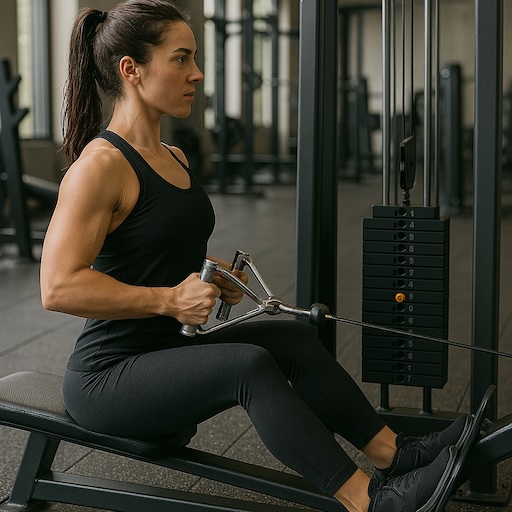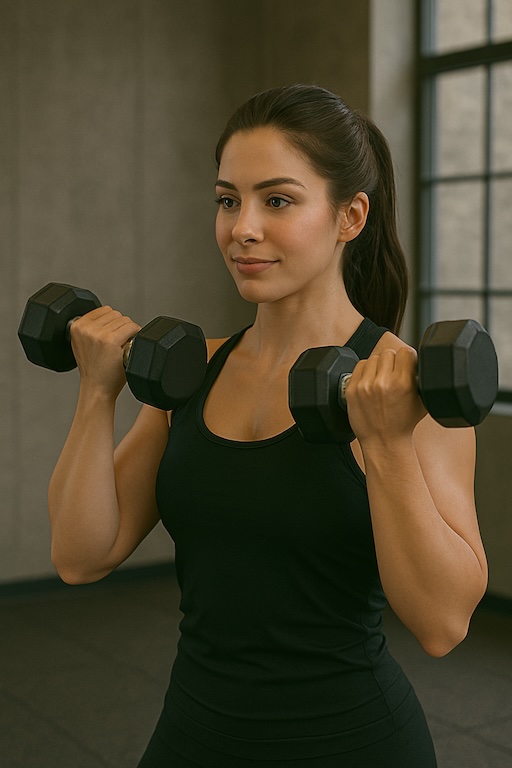By Bryan Alger on April 2, 2025
If you're looking to build a strong, balanced physique, pull exercises deserve a central place in your workout routine. These movements target the often-neglected posterior chain – the muscles of your back, shoulders, biceps, and more. In this comprehensive guide, we'll explore the most effective pull exercises and how to incorporate them into your training for maximum results.
What Are Pull Exercises?
Pull exercises are movements where you're pulling weight toward your body or your body toward a fixed object. These exercises primarily target your 'pulling muscles' – the muscles responsible for drawing things closer to you.
The main muscle groups worked during pull exercises include:
- Latissimus dorsi (lats)
- Rhomboids
- Trapezius (traps)
- Rear deltoids (posterior shoulders)
- Biceps and forearms
- Erector spinae (lower back)
These posterior chain muscles are crucial not just for aesthetic balance, but for functional strength, posture correction, and injury prevention. Let's dive into the most effective pull exercises you should include in your workout routine.
Vertical Pull Exercises
Vertical pull exercises involve pulling weight downward toward your body. These movements primarily target your lats and are excellent for building back width.
1. Pull-Ups

The pull-up is arguably the king of vertical pull exercises. This bodyweight movement requires you to lift your entire body weight using primarily your back muscles, making it one of the most challenging and rewarding exercises.
Muscles worked: Latissimus dorsi (primary), biceps, rear deltoids, rhomboids, and core.
How to perform:
- Hang from a pull-up bar with hands slightly wider than shoulder-width apart and palms facing away
- Keeping your core tight and shoulders packed, pull yourself up until your chin clears the bar
- Lower yourself with control back to the starting position
- For beginners, assisted pull-up machines or resistance bands can help until you build sufficient strength
2. Lat Pulldowns

Lat pulldowns are an excellent alternative to pull-ups, especially for beginners or those wanting to target specific rep ranges precisely.
Muscles worked: Latissimus dorsi (primary), biceps, rear deltoids, and rhomboids.
How to perform:
- Sit at a lat pulldown machine with your thighs secured under the pads
- Grasp the bar with a wide grip, palms facing forward
- Pull the bar down to your upper chest while slightly leaning back
- Slowly return the bar to the starting position with control
Horizontal Pull Exercises
Horizontal pull exercises involve pulling weight horizontally toward your torso. These movements primarily target your middle back and are crucial for developing back thickness.
1. Barbell Rows

Barbell rows are a fundamental compound pull exercise that build serious back thickness and overall posterior chain strength.
Muscles worked: Middle back (rhomboids, traps), lats, rear deltoids, biceps, and erector spinae.
How to perform:
- Stand with feet shoulder-width apart, holding a barbell with an overhand grip
- Hinge at the hips until your torso is nearly parallel to the floor, maintaining a flat back
- Pull the barbell toward your lower ribcage, squeezing your shoulder blades together
- Lower the barbell with control back to the starting position
2. Seated Cable Rows

Cable rows provide constant tension throughout the movement, making them excellent for building mind-muscle connection with your back muscles.
Muscles worked: Middle back, lats, rhomboids, traps, biceps, and rear deltoids.
How to perform:
- Sit at a cable row station with feet secured on the platform and knees slightly bent
- Grasp the handle with both hands, arms extended
- Pull the handle toward your abdomen while keeping your back straight
- Squeeze your shoulder blades together at the end of the movement
- Return to the starting position with control
3. Single-Arm Dumbbell Rows
Single-arm dumbbell rows are excellent for addressing muscle imbalances and allowing a greater range of motion than their barbell counterparts.
Muscles worked: Lats, rhomboids, traps, rear deltoids, biceps, and core stabilizers.
How to perform:
- Place your right knee and hand on a bench, left foot on the floor
- Hold a dumbbell in your left hand with arm extended
- Pull the dumbbell up toward your hip, keeping your elbow close to your body
- Lower the weight with control and repeat
- Complete all reps on one side before switching
Arm-Focused Pull Exercises
While compound pull exercises engage the biceps secondarily, direct arm training can further enhance your pulling strength and aesthetic development.
1. Barbell or Dumbbell Bicep Curls

Bicep curls are isolation exercises that directly target the biceps brachii, a key muscle involved in all pulling movements.
Muscles worked: Biceps brachii (primary), brachialis, and forearms.
How to perform:
- Stand with feet shoulder-width apart, holding dumbbells or a barbell with arms extended
- Keep elbows close to your sides and curl the weight up toward your shoulders
- Squeeze your biceps at the top of the movement
- Lower the weight with control back to the starting position
2. Face Pulls
Face pulls are an excellent exercise for targeting the often-neglected rear deltoids and upper back muscles.
Muscles worked: Rear deltoids, middle and upper traps, and rhomboids.
How to perform:
- Attach a rope handle to a cable pulley set at upper chest height
- Grasp the ends of the rope with both hands, palms facing each other
- Step back to create tension in the cable and extend your arms
- Pull the rope toward your face, separating your hands as you pull and keeping your elbows high
- Squeeze your shoulder blades together at the end position
- Return to the starting position with control
Programming Pull Exercises in Your Workout Routine
Now that we've covered the most effective pull exercises, let's discuss how to incorporate them into your training program for maximum results.
Pull Day in a Push-Pull-Legs Split
One of the most popular and effective ways to organize your training is the Push-Pull-Legs (PPL) split. In this approach, pull exercises get their own dedicated training day. For a complete guide to implementing this training methodology, check out our detailed Push Pull Legs Routine.
A sample pull day in a PPL split might look like this:
- Pull-ups or Lat Pulldowns: 3-4 sets of 8-12 reps
- Barbell or Pendlay Rows: 3-4 sets of 8-12 reps
- Seated Cable Rows: 3 sets of 10-15 reps
- Face Pulls: 3 sets of 12-15 reps
- Bicep Curls: 3 sets of 10-12 reps
- Hammer Curls: 3 sets of 10-12 reps
Upper-Lower Split
In an upper-lower split, pull exercises are incorporated into your upper body days alongside push movements.
For example:
- Pull-ups: 3 sets of 6-10 reps
- Barbell Rows: 3 sets of 8-12 reps
- Face Pulls: 3 sets of 12-15 reps
- Bicep Curls: 3 sets of 10-12 reps
Full-Body Workouts
If you're training your entire body in a single session, aim to include at least one vertical pull and one horizontal pull exercise per workout.
Example:
- Lat Pulldowns: 3 sets of 10-12 reps
- Seated Cable Rows: 3 sets of 10-12 reps
Training Tips for Maximizing Pull Exercise Results
- Focus on proper scapular retraction (squeezing your shoulder blades together) during pulling movements
- Avoid using momentum – control the weight throughout the entire range of motion
- Prioritize form over weight, especially for back exercises where proper technique is crucial for targeting the intended muscles
- Consider using lifting straps for heavier sets when grip becomes the limiting factor
- Vary your grip width and hand positions to target different aspects of the back muscles
Common Mistakes to Avoid
- Using too much bicep and not enough back – focus on initiating the movement with your back muscles
- Excessive body swing or momentum – keep movements controlled and deliberate
- Incomplete range of motion – ensure full extension at the bottom of movements and full contraction at the top
- Neglecting the eccentric (lowering) portion of the exercise – lower the weight with control
- Improper posture – maintain a neutral spine and avoid excessive arching
Conclusion
Pull exercises are essential for building a balanced physique, improving posture, and developing functional strength. By incorporating a variety of vertical and horizontal pulling movements into your routine, you'll build a stronger, more muscular back and arms while also supporting overall physical health.
For optimal results, combine these pull exercises with a well-structured training program like our Push Pull Legs Routine, progressive overload principles, and proper nutrition. Track your workouts in the Gravitus app to ensure you're consistently challenging yourself and making progress over time.
The back is perhaps the most neglected muscle group for the average lifter. Yet, a strong, well-developed back is the foundation for overall strength and an impressive physique.
What's your favorite pull exercise? Let us know in the comments, and don't forget to track your pull workouts in Gravitus to monitor your progress!
Bryan is the Co-Founder of Gravitus and also a Marine Corps veteran and seasoned engineer. The only thing Bryan likes more than hacking code is pumping iron.

